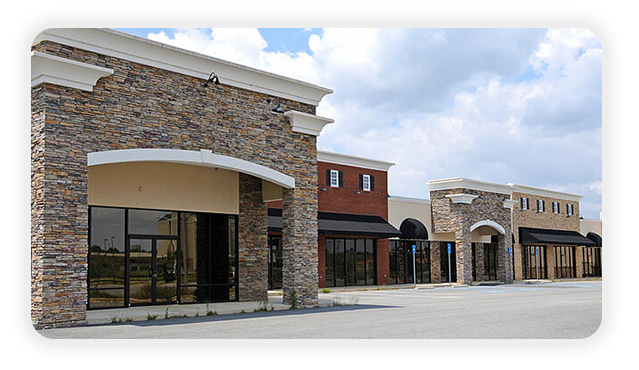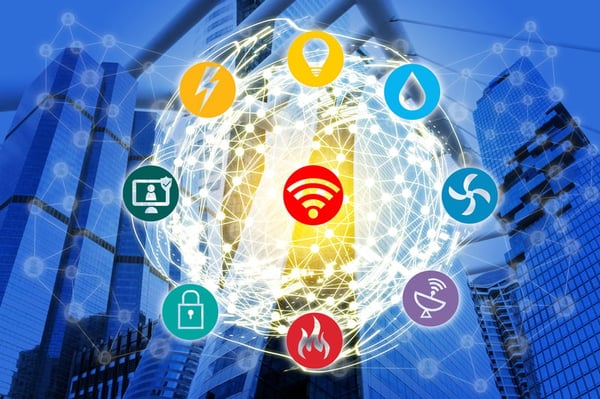Guide to Building Management Technologies

Energy and Facility Managers are increasingly looking at how building technologies can help them manage business and commercial properties. The pressures to do so revolve around operational savings and energy efficiency. There are also growing expectations by industry and consumers for businesses to behave in an environmentally sustainable way, which is something these technologies can help address.
The thriving availability of simple-to-use web-based portals and devices is also leading infrastructure and operational professionals to turn to technology. We are all quite accustomed to how beneficial connecting to the internet and using Smart devices can be. In the building industry, it is even becoming standard to outfit building controls and field devices with Internet Protocol, which enables data integration and control options like never before.
There are three key categories of building management technologies this article will look at:
Building Automation Systems
Energy Management Systems

Building Management Systems / Building Automation
Building Automation Systems (BAS) integrate a building’s mechanical and electrical systems into a computer control platform.
A BAS allows you to control and automate a building’s ventilation, lights, elevators, fire alarms, and security system through a single computer program.
A BAS system consists of four “layers.”
These layers include:
- Server/Application Layer
- Supervisory Layer
- Field Controller Layer
- Input/Output Layer
At the server layer are the machines that collect and serve up the data from the building sensors.
At the supervisory layer is the hardware and software that communicates to the field control layer.
The field controller layer is the way building automation communicates. This is actioned through field controllers, with information going back to the supervisor layer.
The input/output layer refer to the information coming in from sensors around the building that gauge things like temperature, pressure, security signals, and etc.

A BAS can be set up to carry out specific tasks during an emergency.
In the event of a fire, for example, a BAS can route elevators to the ground floor and lock them down so no one attempts to use them. A BAS system can also be set up to trigger the HVAC system to stop the spread of smoke through the building.
A BAS is usually configured by a facility manager and does not take into account historical data or allow for any analytical reporting to make efficiency adjustments.
BAS systems can be quite costly to install, with the average cost to deploy a basic BAS at about $2.30 per square foot, equivalent to $250,000 for a 100,000 square foot building.
Energy Management Systems

Energy Management Systems (EMS) are set up to specifically reduce and control energy consumption. They are computer-based systems that measure energy consumption and identify areas for improved efficiency.
EMS allows energy and facility managers to centrally monitor building sensors across multiple locations (cinemas, grocery store chains, restaurants, etc). The data can be broad or quite narrow allowing managers to analyze and make informed decisions on energy activities.
Some buildings can save up to 50% in energy costs using an EMS, with the majority of savings typically seen with HVAC and lighting expenditures.
A good EMS will assist facility managers to evaluate three key areas:
- Consumption
- Energy Use
- Energy Efficiency
Consumption
Is your equipment/energy consumption being used only when required?
HVAC and lighting are often on in buildings when no one is even in the building, or in a particular area of a building. The EMS can be programmed to turn off HVAC and lighting during certain times and/or in certain building areas.
Energy Use
Are you only using as much energy as required? Here is where specific light levels, temperature sets, and general ventilation throughout a building’s areas should be assessed. Pulling down light levels during the evening, for example, could make significant savings.
Energy efficiency
Is your energy use as efficient as possible? Are the most efficient light bulbs for the cost or the most efficient heating and cooling systems being used? This analysis as well can save a lot of money.

Smart Buildings
SMART technology is quite familiar to and in use by most consumers and businesses. SMART stands for Self-Monitoring Analysis and Reporting Technology.
The improvement of machine to machine communication, or Internet of Things (IoT), has helped along Smart technologies. Businesses around the world are turning to these tools to improve efficiencies, reduce cost, and even develop new business models. Gartner research shows that some 20 billion devices will be connected to the internet by 2020. The uptake and potential is clearly massive.
Smart Buildings, just like our smart devices, connect to the IoT and can run many functions. Smart buildings can automate and monitor systems, as well as integrate building systems and sensors to improve efficiency.
Smart buildings allow for an increase in preventative maintenance and improved analytics. For a building to be truly intelligent, it needs to forecast things like future demand based on inputs such as schedule and weather, and then plan for the most efficient ways to meet that load. If temperatures spike and a demand response event is called, buildings should also be ready to automatically execute a plan based on your company’s predefined business processes and strategies.
Smart buildings can react. This is critical when things don’t go according to plan. If, for example, a critical HVAC component such as a rooftop unit or chiller goes offline, the building must adapt its optimization strategy to minimize energy consumption and cost without sacrificing occupancy comfort. When an electricity price spike occurs in the real-time energy market, the building should be smart enough to shed load during the spike to a later time, when prices are lower.
Which building management system is employed by facility managers, really depends on application. It is recommended that they seek out professional consultation to analyze the key drivers the business is trying to achieve by moving to one of the solutions and the options that exist to meet those requirements.
Most businesses cite cost savings as the highest objective, which can be of particular concern during peak energy load times. Operational efficiency, risk mitigation, and corporate sustainability tend to be the other key issues business is looking for building management technologies to solve.

Three final points
It is encouraged that facility and infrastructure managers shop for:
- Quality data capture so teams do not get bogged down with cleaning up data to make it useful. Quality data means better integration and automation.
- Solid energy monitoring and reporting/certification to enable cost savings tracking. This helps validate the investment.
- Reliable connection to assets. This is particularly wise for those managing multiple locations as it can be a significant expense to send engineers to troubleshoot issues on-premise.
To learn more about smart buildings, click below for our Roadmap to Smart Buildings.



